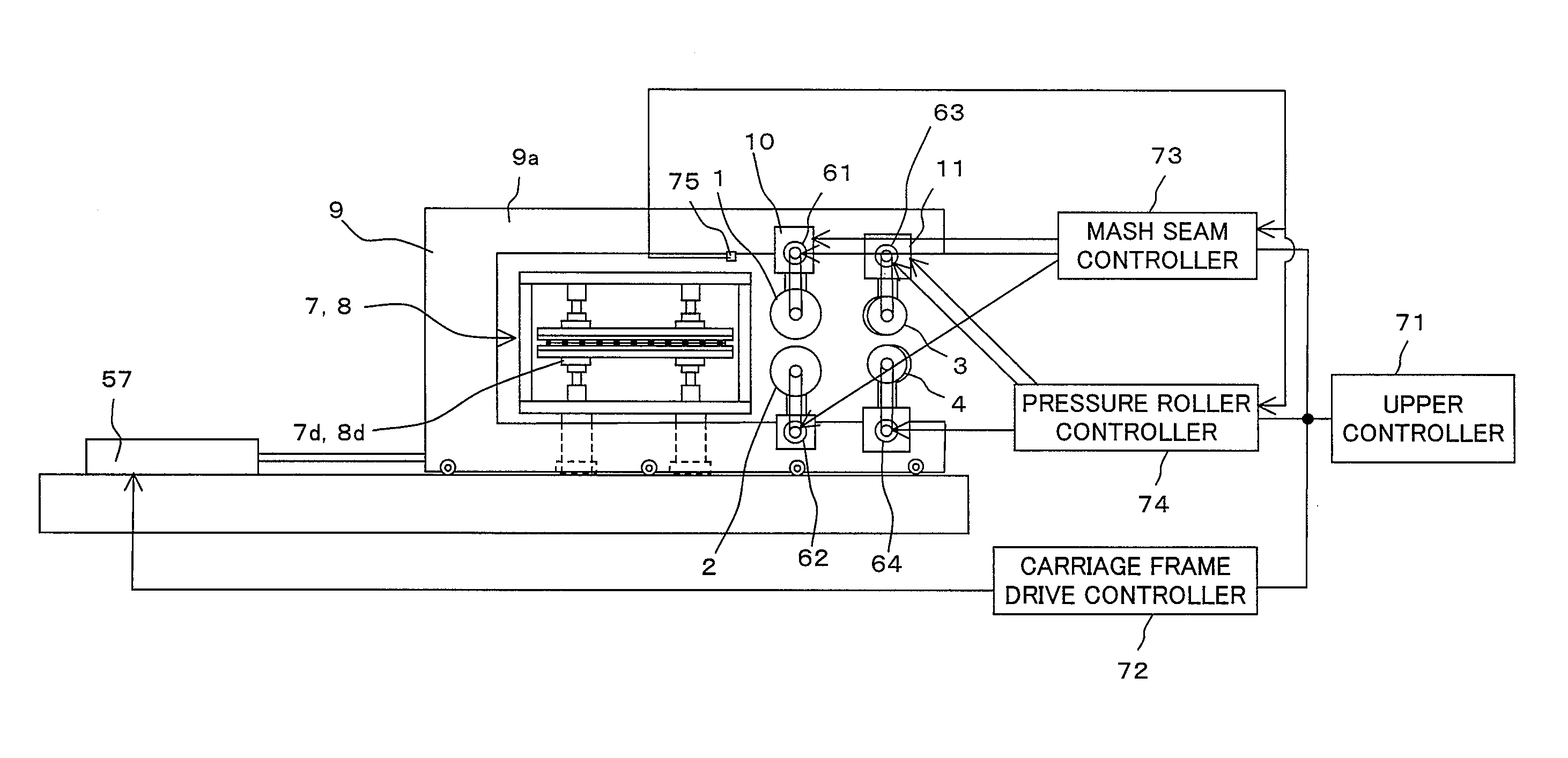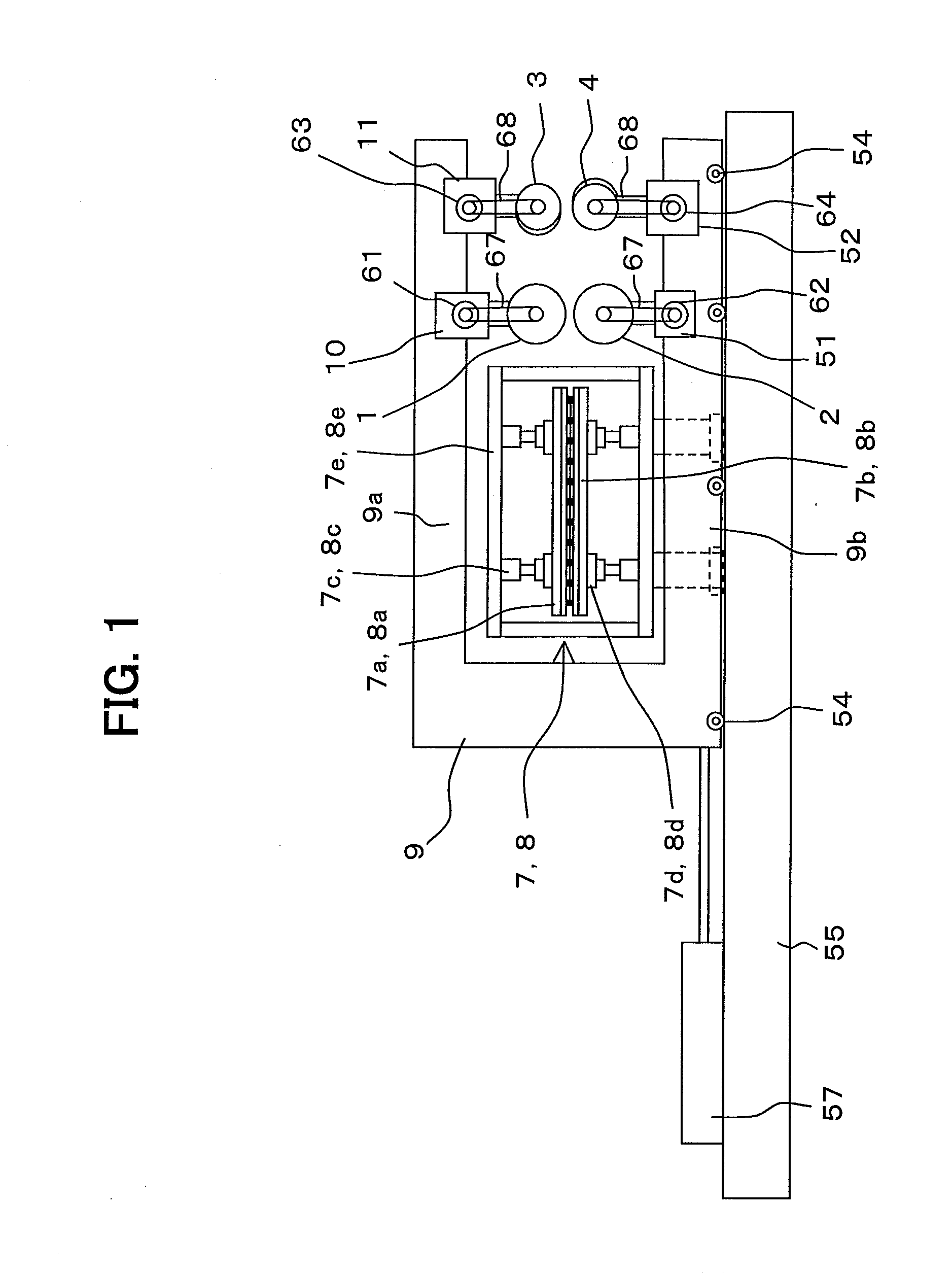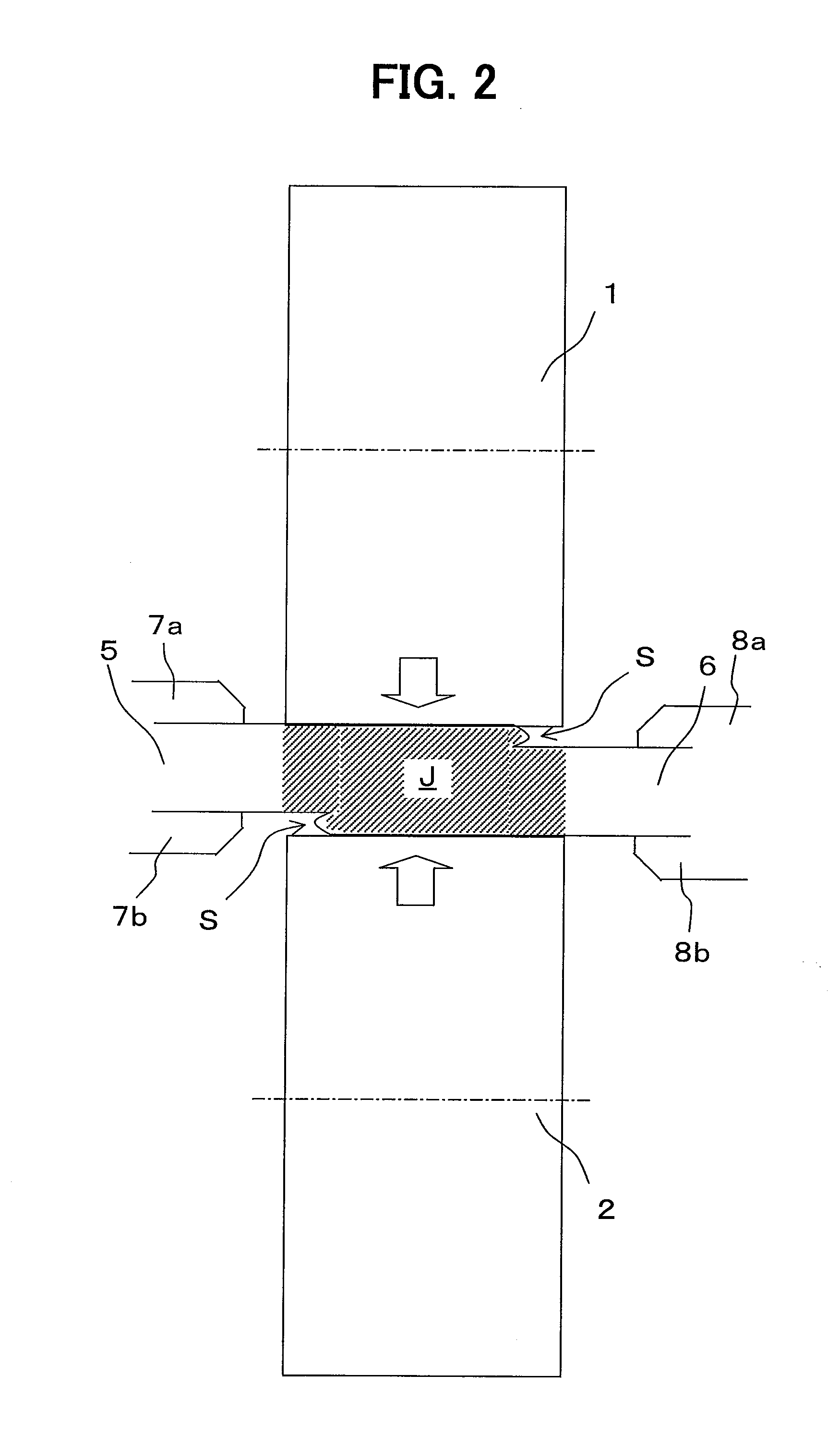Metal plate joining method and apparatus
a metal plate and jointing technology, applied in non-electric welding apparatus, welding/cutting auxillary devices, auxillary welding devices, etc., can solve the problems of increasing the method cannot roll the joint portion to a level corresponding to the thickness of the base material, etc., to reduce the increase of the thickness of the joint portion, reduce the step gradient, and smooth the step
- Summary
- Abstract
- Description
- Claims
- Application Information
AI Technical Summary
Benefits of technology
Problems solved by technology
Method used
Image
Examples
Embodiment Construction
axis[0080]46: Contact arc length portion[0081]51, 52: Mounting blocks[0082]54: Support roller[0083]55: Base plate[0084]57: Cylinder device for driving carriage frame[0085]61, 62: Electric motors[0086]63, 64: Electric motors[0087]67, 68: Chain and sprocket mechanisms[0088]71: Upper controller[0089]72: Carriage frame drive controller[0090]73: Mash seam controller[0091]74: Pressure roller controller[0092]75: Laser distance meter[0093]81: Rotating shaft[0094]82, 83: Pinions[0095]84: Electric motor[0096]85: Tilt angle controller[0097]86: Angle sensor[0098]J: Joint portion[0099]S: Step[0100]A: Traveling direction (rolling direction)[0101]X: Welding line (joining line)[0102]Y: Direction perpendicular to welding line[0103]R: Velocity vector of pressure roller in contact arc portion[0104]R1: Component of velocity vector R in direction of welding line X[0105]R2: Component of velocity vector R in direction perpendicular to welding line X of velocity vector R[0106]α: Tilt angle
BEST MODE FOR CAR...
PUM
| Property | Measurement | Unit |
|---|---|---|
| temperature | aaaaa | aaaaa |
| temperature | aaaaa | aaaaa |
| temperatures | aaaaa | aaaaa |
Abstract
Description
Claims
Application Information
 Login to View More
Login to View More - R&D
- Intellectual Property
- Life Sciences
- Materials
- Tech Scout
- Unparalleled Data Quality
- Higher Quality Content
- 60% Fewer Hallucinations
Browse by: Latest US Patents, China's latest patents, Technical Efficacy Thesaurus, Application Domain, Technology Topic, Popular Technical Reports.
© 2025 PatSnap. All rights reserved.Legal|Privacy policy|Modern Slavery Act Transparency Statement|Sitemap|About US| Contact US: help@patsnap.com



